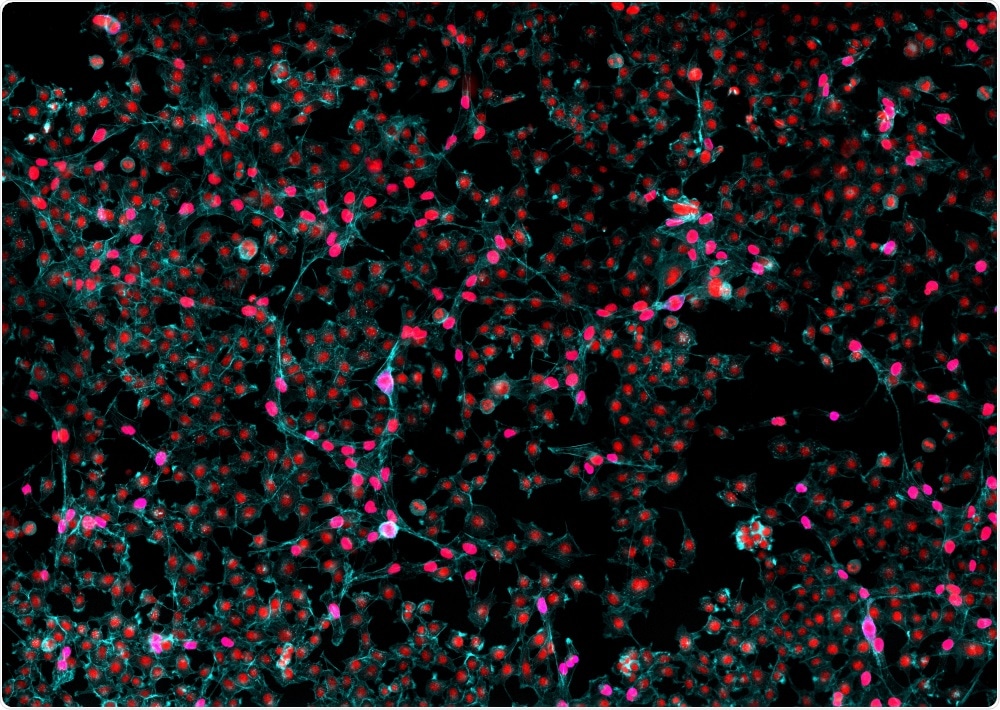
Scientists revive pig brain cells four hours after death, providing hope for stroke patients
In a breakthrough research study, scientists at Yale University have restored cellular activity in the brains of dead pigs. The results of the study titled, Restoration of brain circulation and cellular functions hours post-mortem, were published this week in the journal Nature.
 Damian Ryszawy | Shutterstock
Damian Ryszawy | ShutterstockThe scientists restored the cellular activity of many of the brain cells within the pigs four hours after death. They were able to maintain the function of the cells for the next six hours. While many are comparing the experiment to the sci-fi novel, Frankenstein, those in the scientific community are fascinated.
While the cells were technically alive, there was no electrical activity or consciousness, according to lead researcher Dr. Nenad Sestan, Professor of Neuroscience at the Yale School of Medicine:
Challenging our perception of death
Until now, it was believed that brain cells die rapidly due to the loss of blood supply after death, and that this process is irreversible.
In humans, similar scenarios can be seen in conditions such as stroke and other brain disorders where a single part of the brain could be affected. “By doing this, we can possibly come up with better therapies for stroke and other disorders that cause cells in the brain to die,” said Sestan.
Stephen Latham, Director of the Yale Interdisciplinary Center for Bioethics and co-author of the study added that this process of restoration of a highly vascular organ could mean that other organs could also be similarly restored and harvested for donation and use.
How do you restore cellular function after death?
The experiment involved three stages. In the first stage, the scientists developed a blood like solution made of chemicals that could preserve and restore the brain cells. The next step was to find a device that could circulate this chemical solution throughout the brain in the same way as the circulatory system of a living animal.
Finally, the scientists used delicate surgery to isolate the brain and connect it to the essential arteries and veins so as to simulate circulation. The researchers called their system BrainEx.
‘No animals were sacrificed for the research’
To prove that their system worked, the team carried out the experiment on around 300 freshly severed heads of pigs from a food processing plant around New Haven, Connecticut over a period of months.
Latham said, “No animals were sacrificed for the research. The heads with the brains in them were obtained from the plant after the pigs had already been slaughtered for food.”
First authors of the study Zvonimir Vrselja and Stefano G. Daniele worked on preparing the brains in the lab and setting up the whole system.
Lantham said that they were trying to revive the cells and were not trying to restore consciousness to the brains of the dead animals. The chemical solution that was substituted for the blood was made in such a way that it would block the neuronal activities of the brain and they also had sedatives ready in the eventuality that the solution brought back the brains to active consciousness.
Cell death is a reversible process
Sestan said this experiment and its success proves that brain cell death is and does not have to be irreversible. The team explains that this also means that brain death is a much more complex process than earlier believed; “This indicates that cells in the postmortem brain have the capacity to be revived.”
The team will now work on applying the research to patients who have had a stroke and those who have been patients declared brain dead. “It's very hard to see at the moment that we can do anything where this could be applied to anybody who is in that state,” he concluded.
‘A real breakthrough’
Andrea Beckel-Mitchener of the National Institute of Mental Health has been working on the BRAIN Initiative that began in 2013. This initiative works to advance neurological research and funded the current study. Beckel-Mitchener said, “This is a real breakthrough for brain research. It's a new tool that bridges the gap between basic neuroscience and clinical research.”
Ethical concerns
Khara Ramos, director of the neuroethics program at the National Institute of Neurological Disorders and Stroke called for more thinking on ethical concerns and implications of these experiments.
Dominic Wilkinson, professor of medical ethics at the University of Oxford, said in a statement:
Stuart Youngner, a professor of bioethics and psychiatry, and Insoo Hyun, a professor of bioethics and philosophy, from the Case Western Reserve University School of Medicine wrote a commentary with this article. They said that this could mean that there may be a debate on whether to use the brain dead individuals’ brain for organ donation. These changes and advances in brain resuscitation technology may trigger these debates the researchers wrote.
David Menon, professor and the head of the division of anesthesia at the University of Cambridge called the present research still far from human applications.
“An important fact, since restoration of blood flow to the rest of the body (following a cardiac arrest, for instance), may activate injury processes in non-brain tissues which produce substances that damage the brain (for example, through activation of inflammation). It is also worth pointing out that testing for brain death is usually undertaken after far longer intervals after the insult than the four-hour time point in these experiments—often more than a day later.”
That may be said to the deluge of twitter responses to this news! For example The Washington Post’s twitter post on this news generated a host of comments from the public calling the experiment an attempt to create “zombie pigs”

No comments:
Post a Comment